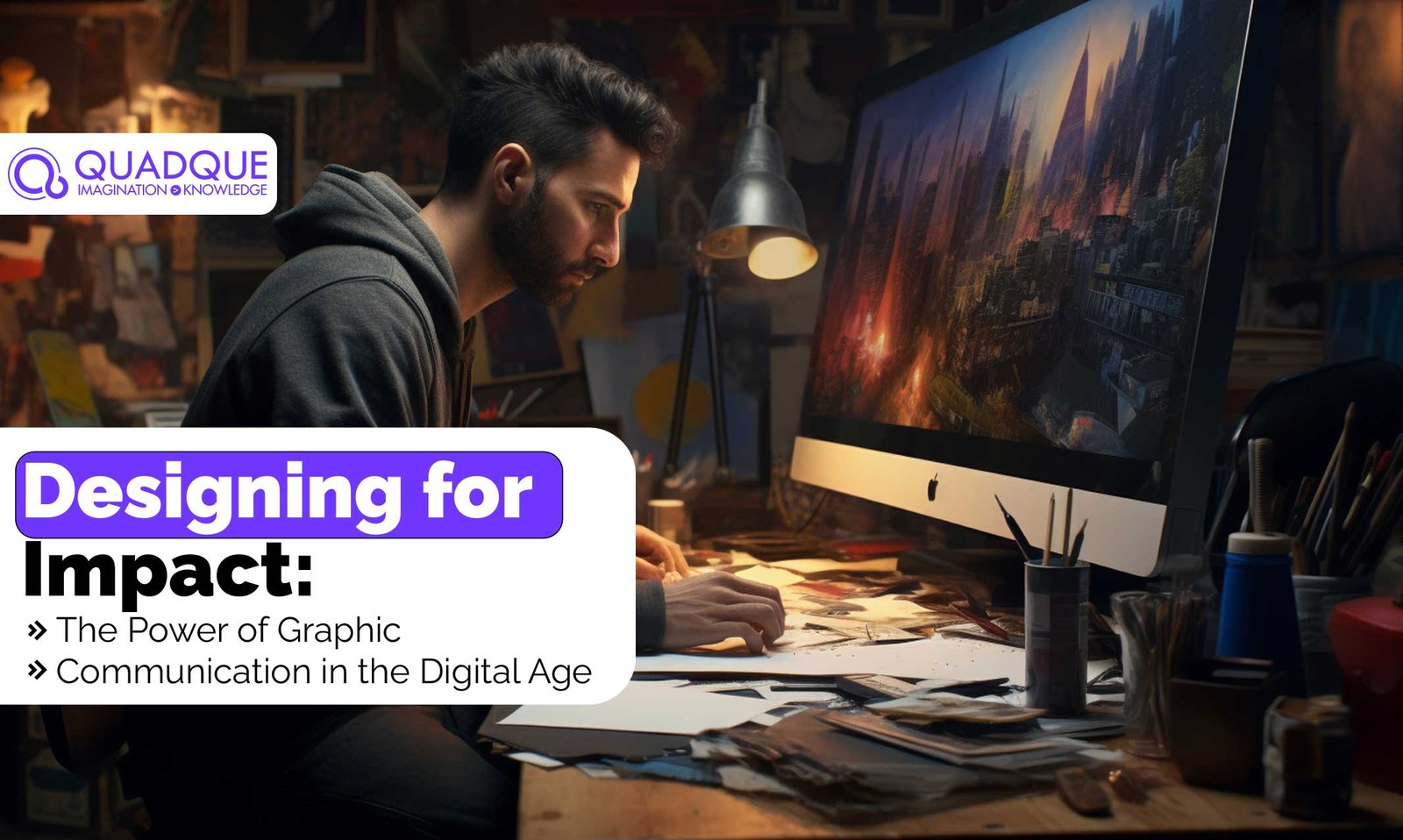
Graphic Communication: Designing for Impact
Overview:
In today’s digital landscape, visual communication stands as a cornerstone of effective messaging and storytelling. From creative illustration to narrative design, the realm of graphic communication is vast and ever-evolving. This article delves into the transformative power of graphic communication in the digital age, exploring innovative techniques, contemporary design trends, and the process behind creating impactful visual narratives.
Subtopics:
Evolution of Visual Communication
Creative Illustration: Bringing Ideas to Life
Narrative Design: Crafting Compelling Stories
Design Inspiration: Fueling Creativity
Innovative Techniques in Graphic Communication
Boundary-Breaking Design: Pushing the Limits
Creative Exploration: Finding Your Voice
Design Innovation: Embracing Change
Contemporary Design Trends
Trend Forecasting in Graphic Communication
Cutting-Edge Techniques: Staying Ahead
Design Tools for the Digital Age
Technique Mastery: Honing Your Skills
The Design Process: From Concept to Creation
Now, let’s delve into each subtopic with descriptive detail and creative flair:
Evolution of Visual Communication:
Visual communication has a rich history dating back to ancient civilizations. From cave paintings to hieroglyphics, humans have always used visuals to convey messages and stories. Fast forward to the digital age, and the evolution of visual communication has been staggering. With the advent of technology, we’ve witnessed a shift from traditional mediums to digital platforms, opening up new avenues for creativity and expression.
Creative Illustration: Bringing Ideas to Life:
Creative illustration serves as the backbone of graphic communication, translating concepts and ideas into visually engaging artwork. Whether it’s hand-drawn sketches or digital illustrations, the art of bringing ideas to life through imagery is a powerful tool for communication. Illustrators leverage their creativity and technical skills to evoke emotions, convey messages, and captivate audiences.
Narrative Design: Crafting Compelling Stories:
At its core, graphic communication is about storytelling. Narrative design focuses on crafting compelling stories through visual elements such as imagery, typography, and layout. By weaving together characters, plotlines, and themes, designers create immersive experiences that resonate with audiences on a deeper level. Whether it’s a brand story, an infographic, or an advertisement, narrative design brings structure and meaning to visual communication.
Design Inspiration: Fueling Creativity:
Inspiration is the lifeblood of creativity. In the world of graphic communication, designers draw inspiration from a myriad of sources – nature, art, culture, and technology, to name a few. By immersing themselves in diverse influences, designers fuel their creative process and push the boundaries of design innovation. Whether it’s a stroll through a museum, a scroll through social media, or a brainstorming session with peers, inspiration can strike from anywhere.
Innovative Techniques in Graphic Communication:
As technology continues to evolve, so do the techniques and tools of graphic communication. From augmented reality to motion graphics, designers are constantly exploring new ways to engage and interact with audiences. Innovative techniques such as 3D modeling, generative design, and interactive storytelling are pushing the boundaries of what’s possible in visual communication, opening up endless possibilities for creativity and expression.
Boundary-Breaking Design: Pushing the Limits:
Boundaries are meant to be pushed, especially in the world of design. Boundary-breaking design challenges conventions, disrupts norms, and sparks conversations. Whether it’s a provocative ad campaign, a daring art installation, or a revolutionary user interface, boundary-breaking design pushes the limits of creativity and innovation. By stepping outside of comfort zones and embracing risk-taking, designers can create truly impactful work that leaves a lasting impression.
Creative Exploration: Finding Your Voice:
Creativity thrives on exploration. Creative exploration encourages designers to experiment, take risks, and embrace failure as part of the learning process. By exploring different styles, techniques, and mediums, designers can find their unique voice and carve out their own niche in the competitive landscape of graphic communication. Whether it’s through personal projects, collaborations, or continuous learning, creative exploration is essential for growth and self-discovery.
Design Innovation: Embracing Change:
In the fast-paced world of graphic communication, innovation is key to staying relevant and competitive. Designers must embrace change, adapt to new technologies, and anticipate emerging trends to stay ahead of the curve. Whether it’s adopting new software, mastering new techniques, or embracing sustainable practices, design innovation is essential for driving progress and shaping the future of visual communication.
Contemporary Design Trends:
Trends come and go, but some leave a lasting impact on the design landscape. Contemporary design trends reflect the current cultural, technological, and social influences shaping our world. From minimalist design to maximalist aesthetics, designers must stay attuned to the latest trends while maintaining a timeless aesthetic that transcends fleeting fads.
Trend Forecasting in Graphic Communication:
Trend forecasting is both an art and a science. By analyzing market data, consumer behavior, and cultural shifts, trend forecasters can predict upcoming trends in graphic communication. From color palettes to typography trends, trend forecasting provides valuable insights that inform design decisions and help designers stay ahead of the curve.
Cutting-Edge Techniques: Staying Ahead:
In the ever-evolving landscape of graphic communication, staying ahead requires a commitment to continuous learning and skill development. Cutting-edge techniques such as responsive design, user experience design, and data visualization are shaping the future of visual communication. By staying abreast of the latest developments and mastering new techniques, designers can maintain a competitive edge in the digital age.
Design Tools for the Digital Age:
Tools are the building blocks of design. In the digital age, designers have access to a vast array of tools and software that streamline the design process and enhance creativity. From Adobe Creative Suite to Sketch, designers leverage these tools to create stunning visuals, streamline workflows, and collaborate seamlessly with clients and colleagues.
Technique Mastery: Honing Your Skills:
Mastery takes time and dedication. Technique mastery is the culmination of years of practice, experimentation, and refinement. Whether it’s mastering a specific software, honing drawing skills, or perfecting typography, designers must continuously strive for excellence in their craft. By investing in skill development and embracing a growth mindset, designers can elevate their work to new heights of creativity and impact.
The Design Process: From Concept to Creation:
Behind every great design lies a thoughtful process. The design process encompasses ideation, research, iteration, and execution, culminating in the creation of impactful visual narratives. By following a structured process, designers can ensure clarity, coherence, and effectiveness in their work. Whether it’s a logo design, a website layout, or a print advertisement, a well-defined design process is essential for delivering results that resonate with audiences.
In conclusion:
the power of graphic communication in the digital age cannot be overstated. It serves as a catalyst for creativity, a vehicle for storytelling, and a medium for connection in an increasingly visual world. From the evolution of visual communication to the mastery of cutting-edge techniques, designers play a pivotal role in shaping the way we perceive and interact with information.
As we’ve explored throughout this article, graphic communication is a multifaceted discipline that encompasses a wide range of skills, from creative illustration to narrative design. It requires a blend of artistic talent, technical proficiency, and strategic thinking to craft compelling visual narratives that resonate with audiences.
Moreover, the landscape of graphic communication is constantly evolving, driven by advancements in technology, shifts in consumer behavior, and emerging design trends. Designers must embrace change, adapt to new tools and techniques, and continuously innovate to stay ahead of the curve.
At its core, graphic communication is about more than just aesthetics—it’s about communication, connection, and impact. Whether it’s conveying a brand message, telling a story, or sparking social change, graphic communication has the power to evoke emotions, provoke thought, and inspire action.
In today’s fast-paced digital world, the demand for skilled graphic communicators is greater than ever. By honing their craft, staying curious, and embracing lifelong learning, designers can unlock their full potential and make a lasting impact on the world around them.
In essence, the journey of designing for impact is an ongoing one—a journey marked by exploration, experimentation, and evolution. As we continue to push the boundaries of creativity and innovation, graphic communication will remain a cornerstone of effective communication, driving positive change and shaping the future of design.
Recent Posts
- Custom Software’s Role in Shaping Tomorrow’s Tech Landscape
- Breaking Down SEO Trends in 2024: Techniques You Need to Know
- Education in USA: Public vs. Private Schools and Their Impact
- Australia’s Tech Titans: The Top Software Companies Down Under
- Inside the Digital Landscape: Australia’s Trailblazing Software Innovators
Recent Comments
Latest Post
Categories
- AI
- Biometric
- Blockchain
- Cloud Computing
- CRM
- custom software
- Cybersecurity
- Data Analysis
- Datacenter Management
- Designer
- Digital Marketing
- Education
- Informative
- ISP Management
- IT Procurement
- IT Recruitment
- IT Support
- Mobile App
- Network Management
- Robotics Landscape
- SAP ERP
- SEO
- Structured Cabling
- Tech Australia
- Tech bangladesh
- Technology
- Web Development


